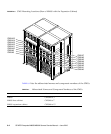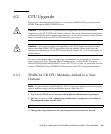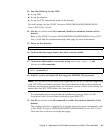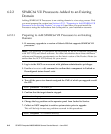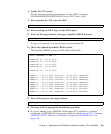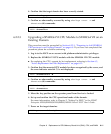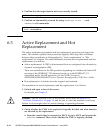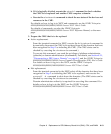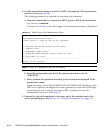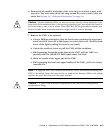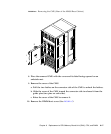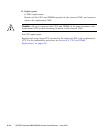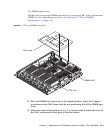
6-12 SPARC Enterprise M8000/M9000 Servers Service Manual • June 2010
8. Confirm that the target domain has been correctly started.
9. Confirm no abnormality occurred by using showlogs error -v and
showstatus(8) commands.
6.3 Active Replacement and Hot
Replacement
The active replacement procedure and hot replacement procedure are almost the
same. This section explains both procedures together. Each step that is different
between these procedures is distinguished by "Active replacement" or "Hot
replacement" as a header. The main difference between active replacement and hot
replacement is as follows:
■ Active replacement: A CMU is disconnected from or configured into a domain by
dynamic reconfiguration (DR).
There are restrictions on the DR operation depending on whether the Solaris OS
operates in the SPARC64™ VII enhanced mode or in the SPARC64™ VI
compatible mode. For DR operation, see the SPARC Enterprise
M4000/M5000/M8000/M9000 Servers Dynamic Reconfiguration (DR) User’s Guide.
■ Hot replacement: A domain must be stopped and restarted.
The procedure for active replacement and hot replacement is as follows.
1. Unlock and open a door of the server.
For details, see Chapter 5.
Caution – Before touching CMU or the dummy (filler) unit, see Section 1.4,
“Antistatic Precautions” on page 1-6 and be sure to wear the antistatic wrist strap.
Failure to do so might result in serious damage to operating domains.
2. Check whether the CMU to be replaced is logically divided and what domains
are affected by the replacement.
a. From the console that is connected to XSCF, log in to XSCF, and execute the
showfru command. Then, check whether the CMU is logically divided.
XSCF> showlogs power
XSCF> showlogs error -v
XSCF> showstatus



